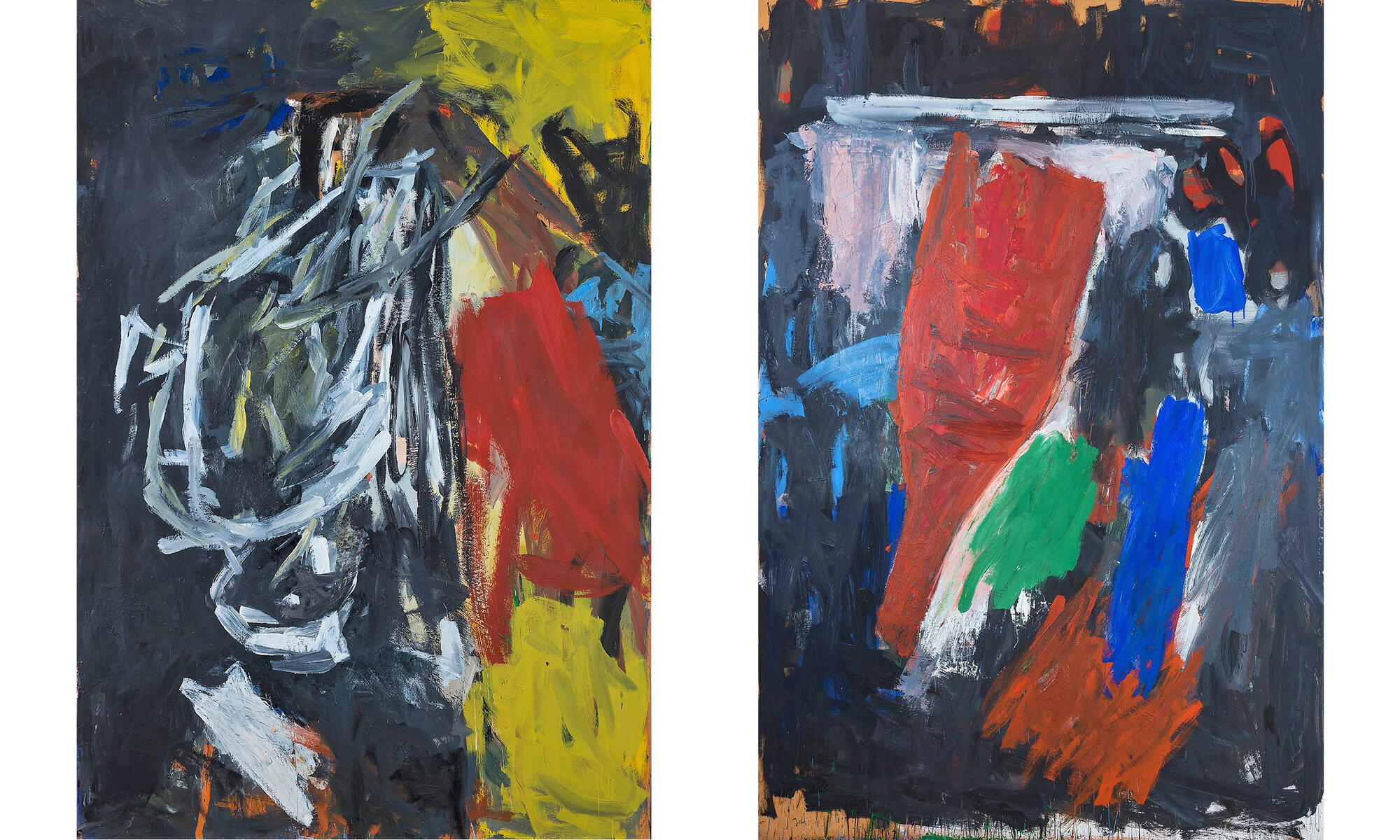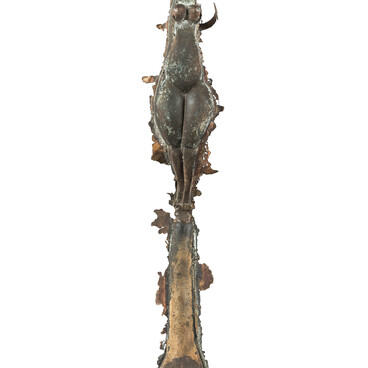Georg Baselitz began his career in the 1950s as a provocative artist rejecting the then-established art. He studied at the Hochschule für Bildende und Angewandte Kunst (Weissensee School of Art and Design) in East Berlin, however, he was later expelled for “sociopolitical immaturity”.
In 1957, Baselitz moved to West Berlin, where he attended the Hochschule der Künste (School of Art). He had his first solo exhibition in 1963 where two of his works were seized on the grounds of their lewd content.
Art critics define the artist’s style as neo-expressionism — a trend that emerged in the 1970s in opposition to the conceptual art. Neo-Expressionists conveyed their emotions through bright colors, broad and sweeping strokes and various materials, and they used any available surface they could paint on, be it ordinary canvas or city walls. Plywood and oil paints were used for the diptych “Bottle and Eagle” from the museum’s collection.
Baselitz was also one of the founders of the Die Neue Wilde (the New Wild) art movement, which encompassed German artists favoring bright colors and spontaneous expressive manner of painting. The members of this community promoted breaking from the boundaries of art and often addressed taboo topics. They strove to surprise the viewers and change their usual perception of works of art.
Georg Baselitz lives and works in Germany and Austria. His solo exhibitions were held in Mannheim, Hamburg, Kassel, Amsterdam, and New York, as well as in the State Russian Museum in Saint Petersburg in 2015.



